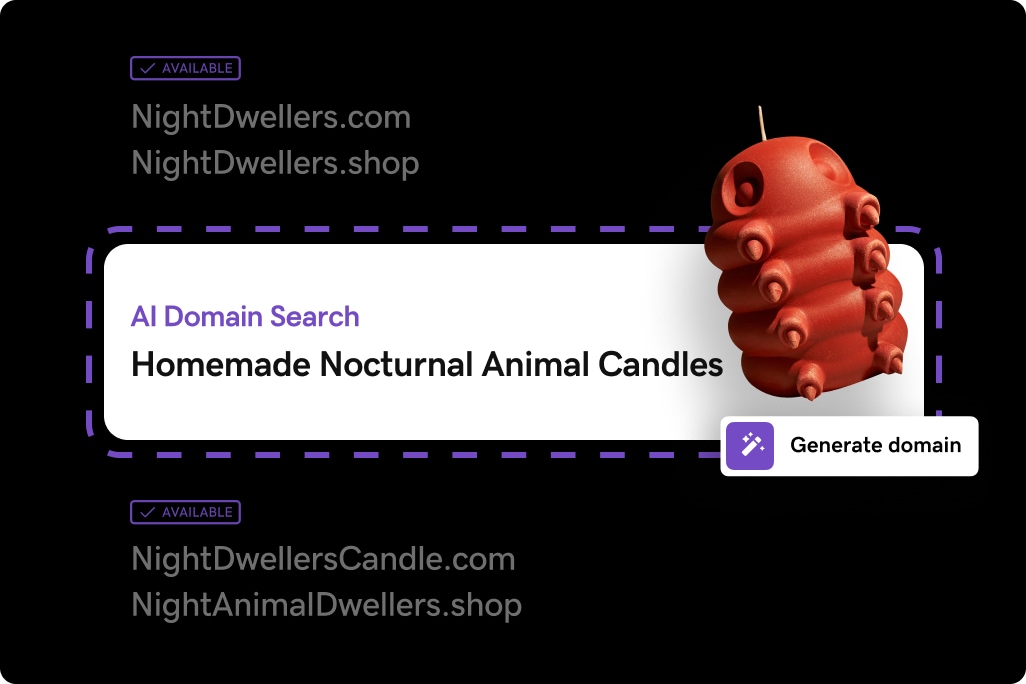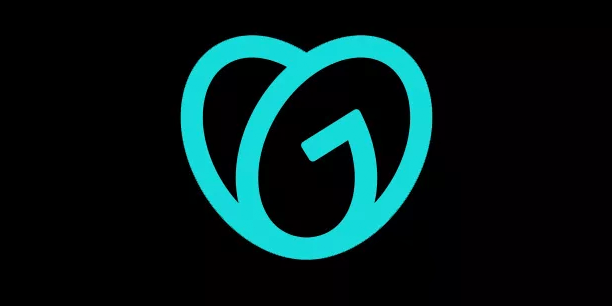Key takeaways
- Pricing a domain takes planning and research. Use domain appraisal tools, study similar sales, and decide whether a fixed or flexible pricing strategy fits your goals.
- Different platforms offer unique benefits for domain sellers. GoDaddy Auctions connects you with a large network of active buyers, Afternic provides global reach, and Dan.com focuses on quick, secure transactions. Choosing the right platform can make it easier to reach serious prospects and close your sale faster.
- For a successful domain sale, take time to optimize your description with relevant keywords, highlight branding potential, and build trust through transparency. Use a secure escrow service to protect both parties, communicate clearly during negotiations, and follow proper transfer steps to ensure a smooth handoff of ownership.
Selling a domain name can be a smart way to turn a digital asset into profit. Maybe you bought a domain name years ago that’s now in demand, or you’ve built a portfolio of domains ready to sell. Whatever your reason, understanding how to sell a domain name the right way can help you get the best return on your investment.
Our step-by-step guide will show you exactly how to list, sell, and deliver your domain name to its new owner. Let’s jump straight in!
Why sell a domain? Benefits and opportunities
Domain selling has become one of the most accessible ways to generate extra income online. As more businesses and entrepreneurs look for the perfect domain to match their brand, the demand for unique, memorable web addresses continues to grow. Selling domains isn’t limited to tech experts or large-scale investors—anyone with a valuable name can participate.
For some, it’s a way to earn side income from domains they no longer use. For others, it’s a path to expanding a business or building a steady revenue stream through domain investing. The best part is how simple it is to get started. Platforms like GoDaddy make it easy to list, market, and sell your domain to a global audience of potential buyers.
Pricing a domain: How much is it worth?
First, you’ll want to set a price for your domain. Choosing your pricing is a balancing act, so here are some tools to help you set a fair price:
Try the Domain Name Value and Appraisal tool
GoDaddy’s domain value and appraisal tool can help give a good starting point for what your domain is worth. This tool uses an exclusive algorithm that combines machine learning with real-market sales data compiled from GoDaddy's 20+ years of experience in the domain space.
Using that information, a domain owner considering selling may wish to immediately sell their domain name or treat the domain like an investment and hold it to see if its value rises in the future. Knowledge is power!
Check similar domain sales
Looking around at what other domain names are selling for is another great way to get a sense of the market value of your domain. To do this, you can seek out specialized domain name marketplaces or websites that track and report on domain name transactions. Examples of this would be websites like NameBio, Domain Name Wire, or NamePros.
When it comes to using sales data to try to figure out a fair price for your domain name, factors to consider are domain length, keywords, extensions, and current relevance. These factors allow you to better identify pricing trends, assess demand for specific domain names, and gain a better overall understanding of the criteria used by domain buyers.
Set your domain value and pricing strategy
Now that you have a rough idea of your domain's potential value, you'll need to decide on a pricing strategy. There are two main approaches:
- Fixed pricing: Set a specific, non-negotiable price for your domain. This approach is straightforward and can work well for highly valuable domains with a clear market value. However, it may limit your negotiating power.
- Flexible pricing: List your domain at a higher "buy it now" price, but also set a lower "minimum bid" or "reserve price" that you're willing to accept. This strategy allows for negotiation and can help attract more potential buyers.
For example, let's say you have a domain name that, based on your research, could be worth anywhere from $1000 to $2500. You could list it with a fixed price of $2000 or set a reserve price of $1000 and a buy-it-now price of $2500. There’s no hard-and-fast rule here, but if you believe that there’s a competitive market for your domain name, allowing users to bid can end up working in your favor.
Ultimately, the right pricing strategy depends on your domain's value, your negotiation skills, and your willingness to be flexible. The goal here is to maximize your return while also attracting serious buyers.
Pro tips: How to spot hidden value in your domain
Not every domain’s value is obvious at first glance. Some names hold untapped potential that can significantly boost their market appeal. Here’s how to find your domain’s real worth:
- Niche relevance: Domains that fit emerging industries, tech trends, or specialized communities often gain traction over time.
- Branding potential: Short, memorable, and easy-to-pronounce names are attractive to startups and marketers looking to build a strong brand.
- Emotional connection: Names that evoke trust, excitement, or curiosity can resonate more with buyers.
- Versatile meaning: A domain that applies to multiple industries or audiences can appeal to a wider pool of buyers.
- Extension advantage: While .com remains dominant, other extensions like .io or .ai can add modern appeal for tech and innovation-focused businesses.
List your contact information on WHOIS
WHOIS is a public directory that stores information about registered domain names, including the contact details of the domain owner. It's an important resource for domain buyers and sellers, as it allows them to identify and communicate with the current owner of a domain.
When selling a domain name, it's a good idea to have your contact information listed on the WHOIS record to expedite communication between you and potential buyers.
It's important to note that while WHOIS records are public, you can choose to use a privacy protection service offered by domain registrars. This service masks your personal information from the public WHOIS record, replacing it with the service provider's contact details.
When selling a domain, it's generally recommended to make your contact information visible to potential buyers. However, if you're uncomfortable doing so, you'll want to ensure you've enabled message forwarding for your domain privacy services.
Choose where to sell your domain
After settling on a price and prepping your domain details for a sale, it’s time to choose where you’d like to sell your domain.
GoDaddy Auctions
GoDaddy Auctions is one of the most trusted platforms for selling domain names, especially for those who already have an account with GoDaddy, a leading domain registrar. Its seamless integration with the GoDaddy ecosystem makes listing, tracking, and managing your domain sales simple and efficient.
With GoDaddy Auctions, you can choose from multiple selling options, including fixed-price listings, auctions, and a brokerage service for high-value domains.
The platform’s built-in visibility gives your domain an extra advantage by automatically promoting it across GoDaddy’s network to reach a wider audience of active buyers. It’s a streamlined way to connect your domain with serious buyers and make the most of GoDaddy’s trusted marketplace.
Afternic
Afternic (a GoDaddy-owned brand) is a well-established and reputable domain marketplace that has been around since 1999. One of the key advantages of using Afternic is its extensive reach and visibility. With Afternic domains being listed across multiple domain registrars, your domain name is more likely to get exposure to a larger pool of potential buyers.
Additionally, Afternic offers a variety of selling options, including buy-it-now fixed price listings, auctions, lease-to-own, and a brokerage service for high-value domains.
Afternic's listing process is straightforward, and the platform provides comprehensive tools and analytics to help you price your domain effectively and monitor its performance. The platform also offers escrow services and secure payment processing, ensuring a safe and hassle-free transaction for both buyers and sellers.
While Afternic charges fees for its services, the potential for reaching a global audience and the added security measures make it a compelling choice for those looking to sell their domain names.
Dan.com
Dan.com (a GoDaddy brand) is a relatively new player in the domain marketplace, but it has quickly gained popularity among domain investors and sellers. One of the key advantages of using Dan.com is its user-friendly interface and streamlined selling process. The platform allows you to list your domain names for sale with just a few clicks, making it an attractive option for those who value simplicity and ease of use.
Dan.com offers a variety of selling options, including fixed-price listings, auctions, and a brokerage service for high-value domains. The platform also provides detailed analytics and reporting tools, allowing you to track the performance of your listings and make informed decisions about pricing and marketing strategies.
One unique feature of Dan.com is its emphasis on transparency and fairness. The platform operates on a commission-based model, meaning you only pay a fee if your domain sells. Additionally, Dan.com does not charge any listing fees, making it a cost-effective option for those looking to sell their domain names without incurring upfront costs.
Park the domain
Domain parking is a viable option for those looking to monetize their domain names while awaiting a potential buyer. You can generate passive income through pay-per-click advertising revenue by parking your domain. When visitors land on your parked domain, they'll be presented with relevant ads, and you'll earn a share of the revenue each time someone clicks on those ads.
This approach is particularly appealing if you own a high-traffic domain or one that's closely related to popular search terms. The more relevant and valuable your domain is, the higher the likelihood of generating substantial advertising revenue through domain parking services.
With all that said, it's essential to note that domain parking should not be viewed as a long-term strategy for maximizing your domain's value. While it can provide a steady stream of income in some cases, the real potential lies in finding the right buyer who recognizes the domain's worth and is willing to pay a premium price.
When to use a broker or sell privately
Choosing between using a domain broker or handling a private sale depends on your goals, experience, and the value of your domain.
| Option | Pros | Cons | Best For |
|---|---|---|---|
| Domain Broker | Expert guidanceAccess to large buyer networksNegotiation handled for you | Commission feesLess control over the sale | High-value or premium domains |
| Private Sale | No feesFull pricing control | Time-consumingMust handle negotiation and communication yourself | Mid- to lower-value domains or direct buyer interest |
Optimize your domain listing
Most domain-selling platforms will offer options to sellers looking to optimize their domain’s landing page. Some strategies for optimizing your domain name might include:
- Create a dedicated landing page: Develop a simple website showcasing the domain's features, potential uses, and value proposition. This can help buyers visualize the domain's potential and increase its perceived worth.
- Optimize your listing: Write a clear, engaging description that highlights what makes your domain stand out. Focus on its branding potential, easy recall, and possible uses for different industries. Add relevant keywords to help more buyers discover your listing through search.
- Leverage social media, forums, and domain communities: Share your domain on platforms where entrepreneurs, investors, and brand builders gather. Highlight its unique appeal and how it could fit into specific industries or business ideas to spark interest and drive traffic to your listing.
- Reach out to potential buyers: Don’t wait for offers to come to you. Identify businesses, startups, or individuals who could benefit from your domain and reach out directly. Personalized messages that explain how the domain supports their goals can increase your chances of landing a serious buyer.
- Utilize targeted advertising: Consider running targeted ads on relevant websites or platforms frequented by potential buyers in your domain's niche or industry.
Use an escrow service
Using an escrow service when selling a domain name is a crucial step that helps protect both the buyer and the seller from potential risks and ensures a smooth transaction.
An escrow service acts as a trusted third party that holds the domain and the payment until both parties have fulfilled their respective obligations.
When selling a domain name, the seller wants to ensure they receive the agreed-upon payment before transferring ownership, while the buyer wants to guarantee they receive the domain after making the payment.
An escrow service bridges this gap by holding the domain in escrow until the buyer's payment clears, at which point the domain is transferred to the buyer, and the payment is released to the seller. This process eliminates the risk of one party not holding up their end of the bargain, providing peace of mind and security for both parties involved.
Reputable escrow services typically offer additional features, such as domain transfer assistance, dispute resolution mechanisms, and secure communication channels. These features help streamline the transaction process, ensure transparency, and provide a means for resolving potential conflicts.
Transfer the domain name
Once you’ve sold your domain name, it’s time to transfer it to the new owner. Many domain listing sites will handle the transfer for you, but either way, it’s important to understand how a domain transfer works. The process can vary slightly depending on the registrar, but generally follows a similar pattern.
For example, if you're transferring a domain from GoDaddy, you'll need to unlock the domain and obtain an authorization code (also known as an EPP code). This code is required to start the transfer process and serves as a security measure. Once you have the code, you'll need to provide it to the buyer, who will then initiate the transfer process with their chosen registrar.
The duration of a domain transfer can vary, but it typically takes between 5 to 7 days to complete.
However, there are instances where the process can be delayed due to certain issues. One common issue is a domain being locked or on hold, which can prevent the transfer from going through. This situation can arise if there are outstanding fees or disputes associated with the domain. In such cases, the seller must resolve the issue with the registrar before proceeding with the transfer.
Another potential issue is the domain's expiration date being too close. Most registrars have a policy that prohibits transfers within a certain window before the domain's expiration date. If this is the case, the seller may need to renew the domain before initiating the transfer.
To avoid delays, it's essential to communicate openly with the buyer and follow the registrar's guidelines closely. Additionally, it's recommended that the transfer process be initiated well before any deadlines to ensure a smooth and timely ownership transition.
Related: How to transfer a domain to GoDaddy
Tips for a successful domain sale
Now that we’ve covered the basics of selling a domain name, let’s go over some extra tips and suggestions to help your domain sale be a success.
Create a compelling pitch
Prepare an enticing sales pitch that highlights the domain's unique qualities, potential branding opportunities, and any existing traffic or search engine authority. Create a professional landing page or sales listing that showcases the domain's value and provides clear contact information for potential buyers.
Get your domain noticed
Utilize multiple platforms to list and market your domain, including specialized domain marketplaces, auction sites, and social media channels. Networking within industry forums and reaching out to potential buyers directly can also help you find the right purchaser who sees the true value of your domain.
Be flexible and prepare to negotiate
Be prepared to negotiate and remain flexible with your pricing. While you should have a minimum acceptable price in mind, being open to reasonable offers can help you close a sale more quickly. Consider using an escrow service to protect both the buyer and seller during the transaction, which adds credibility and security to the sale process.
Monitor industry trends - timing is everything
Timing can be crucial in domain sales. Monitor industry trends, emerging markets, and potential buyers who might find your domain particularly valuable. Sometimes holding onto a domain until the right opportunity presents itself can result in a significantly better sale price.
Be professional before, after, and during the sales process
Maintain professionalism throughout the sales process. Respond promptly to inquiries, provide accurate information, and be transparent about the domain's history and potential. A professional approach can build trust and increase the likelihood of a successful sale.
Challenges in selling domains
Selling a domain can come with a few hurdles, especially for new sellers. Market saturation means there’s plenty of competition, and standing out takes effort. Valuing your domain accurately can also be tricky; pricing too high can deter buyers, while pricing too low can leave money on the table. Disputes or trademark issues may arise if a name closely resembles an existing brand, and some buyers may hesitate to trust unfamiliar sellers.
The good news is that most of these challenges can be managed with the right approach. Do your research before listing, be transparent about ownership, and use a reputable platform like GoDaddy Auctions to handle transactions securely. Building trust and communicating clearly can go a long way in closing a sale.
For a deeper look at what to avoid and how to navigate these challenges, check out this guide on domain investing pitfalls.
How to sell a domain name FAQ
Is it worth selling a domain name?
Yes, selling a domain name can be worth it, especially if you’re holding one you no longer use or if there’s strong demand for it. Even a single sale can provide a solid return on a small initial investment. If you’re interested in turning unused domains into a steady source of income, you can learn how to build a domain portfolio and grow your presence in the aftermarket. For inspiration, read the Ali Zandi success story to see how one seller turned domain investing into a thriving business.
What is the best way to sell a domain name?
To sell a domain name, you’ll first need to determine your domain's value. This can be done using tools like GoDaddy’s domain value appraisal tool and by comparing sales data on industry websites and forums. Then, you’ll need to choose your preferred sales platform, such as Afternic, Dan.com, or GoDaddy Auctions, to facilitate the domain purchase process.
Is domain selling easy?
If you have a desirable domain name, price it competitively, and utilize effective sales platforms and marketing strategies, selling it can be relatively straightforward. However, selling a less desirable domain name with no established presence can be quite challenging. It's not a guaranteed quick and easy process.
What is the average selling price for a domain name?
There's no single average selling price for a domain name. The price can range from a few dollars to millions, depending on a multitude of factors. Instead of looking for an average, it's better to research comparable domain names. Look for domains with similar keywords, length, and TLDs that have recently sold to get a better idea of what a particular domain might be worth.
Should I sell my domain?
There’s no one-size-fits-all answer for this. If you have a high-value domain name that you’re not planning to use, then selling your domain name may be the right call. You’ll need to weigh the pros and cons based on your individual circumstances and the domain's potential value. If you're unsure, getting a professional appraisal can provide valuable insights.







